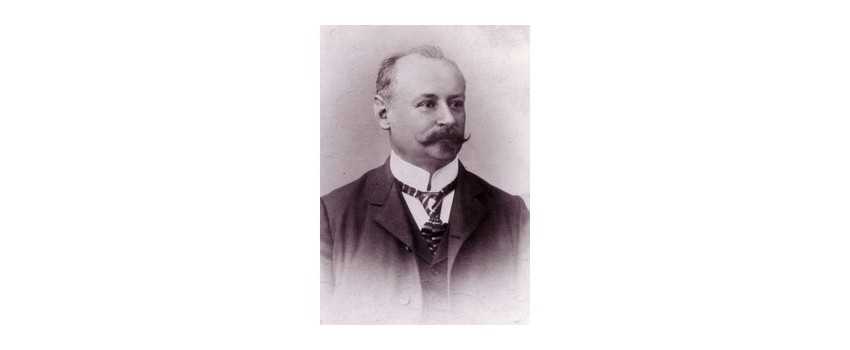Early Life and Musical Beginnings
Albert Seitz, born on June 24, 1872, in Besançon, France, emerged as a significant yet often overlooked figure in the realm of French classical music. His birthplace, nestled in the culturally rich Bourgogne-Franche-Comté region, provided a nurturing environment for his budding musical talents. The city’s deep-rooted artistic heritage likely played a crucial role in shaping young Seitz’s musical sensibilities.
From an early age, Seitz displayed a natural affinity for music. While details of his early education remain scarce, it’s evident that he received formal musical training, eventually mastering the viola. This choice of instrument, often overshadowed by the more popular violin, would become a defining aspect of Seitz’s musical career.
Rise to Prominence: Joining the Orchestre de la Société des Concerts du Conservatoire
Seitz’s talent did not go unnoticed in the vibrant musical scene of turn-of-the-century France. In 1900, at the age of 28, he achieved a significant milestone in his career by securing a position with the prestigious Orchestre de la Société des Concerts du Conservatoire. This ensemble, founded in 1828, was one of the most respected orchestras in Europe, and Seitz’s appointment speaks volumes about his abilities as a violist.
For over three decades, from 1900 to 1932, Seitz was an integral part of this renowned orchestra. This period of his life would have exposed him to a wide range of musical styles and influences, as he performed under the baton of some of the most celebrated conductors of the era and played alongside the cream of French musicians.
Compositional Career and Notable Works
While Seitz’s role as an orchestral violist was significant, it is through his compositions that we can truly appreciate the depth of his musical genius. His oeuvre spans various genres, from light-hearted operettas to profound chamber music pieces, showcasing his versatility as a composer.
Early Works: Operetta and Light Music
One of Seitz’s earliest known works is the operetta “Un nuage à la lune de miel” (A Cloud on the Honeymoon), composed in 1896. This piece, with its libretto by Charles Frot, hints at a playful side to Seitz’s musical personality and demonstrates his ability to engage with popular forms of entertainment.
Chamber Music: A Core Focus
As Seitz’s career progressed, he increasingly focused on chamber music compositions, which form a significant part of his legacy. Notable works in this genre include:
Two sextets for flute, oboe, clarinet, bassoon, horn, and piano (both part of his Opus 22)
- String Quartet in C major, Op. 24
- Sonata in C minor for violin and piano, Op. 30 (1904)
- “Fantaisie de concert” in D minor for viola or cello and piano, Op. 31 (1904)
- These pieces showcase Seitz’s skill in handling complex instrumental textures and his deep understanding of chamber music dynamics.
Viola-Centric Compositions
Given his expertise as a violist, it’s no surprise that Seitz composed several pieces highlighting this instrument. The “Fantaisie de concert” in D minor for viola or cello and piano, Op. 31, is particularly noteworthy. This piece demonstrates Seitz’s intimate knowledge of the viola’s capabilities and his ability to showcase its rich, warm tones.
Other Notable Works
“Chant dans la nuit” (Song in the Night) – A set of two pieces for flute (or violin) or cello and piano, published in 1901. The evocative titles of the movements, “Aux jours heureux” (In Happy Days) and “Évocation” (Evocation), reveal a more introspective side to Seitz’s music.
Musical Style and Influences
Seitz’s compositional style was shaped by the rich musical environment of late 19th and early 20th century France. The influence of impressionism, which was in full bloom during this period, can be heard in some of his works. However, Seitz was not bound by any single style or movement. His music often blends elements of late romanticism with more modern techniques, creating a unique voice that bridges different musical eras.
His experience as an orchestral musician undoubtedly influenced his compositional approach, particularly in his chamber works. The intricate interplay between instruments in his sextets and string quartet demonstrates a deep understanding of ensemble dynamics, likely honed through years of orchestral playing.
Legacy and Rediscovery
Albert Seitz passed away on September 23, 1937, in Paris, leaving behind a legacy of beautiful music that, while not as widely recognized as some of his contemporaries, continues to enrich the world of classical music. In recent years, there has been a growing interest in rediscovering overlooked composers from this period, and Seitz’s works have begun to attract renewed attention.
His compositions, particularly his chamber music pieces, offer a window into the rich musical landscape of early 20th century France. They showcase not only Seitz’s technical skill as a composer but also his deep emotional expressiveness and his ability to create music that resonates with listeners across generations.
Conclusion: The Importance of Rediscovering Albert Seitz
The story of Albert Seitz serves as a reminder of the many talented individuals who have contributed to the rich history of classical music but have not received widespread recognition. His life and work offer valuable insights into both his individual artistry and the broader musical culture of his time.
As we continue to explore the vast tapestry of musical history, figures like Albert Seitz remind us that behind every well-known composer or performer, there are countless others whose contributions, though less celebrated, are no less significant in shaping the world of music we know today. In rediscovering Albert Seitz, we not only honor his individual legacy but also gain a deeper appreciation for the collective effort that has driven the evolution of classical music through the ages.
Seitz’s music, with its blend of romantic sensibility and early modern techniques, offers contemporary listeners a unique perspective on a pivotal period in musical history. As more musicians and music lovers discover his works, Albert Seitz may yet take his rightful place among the celebrated composers of early 20th century France.

